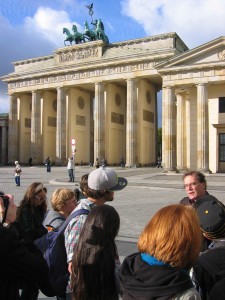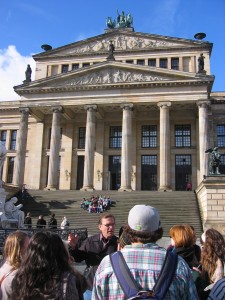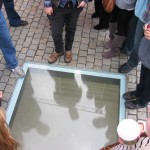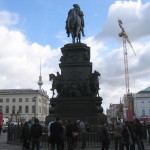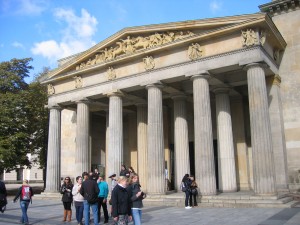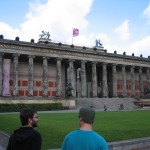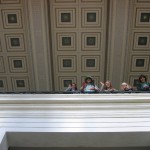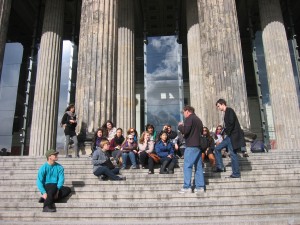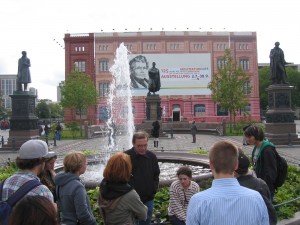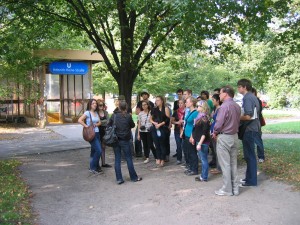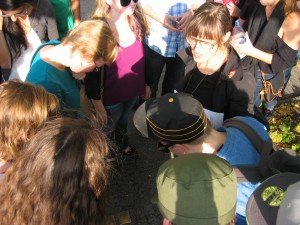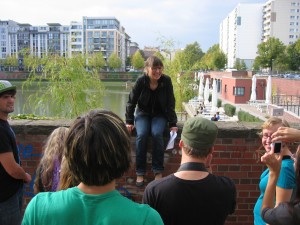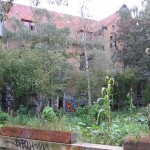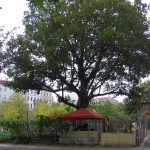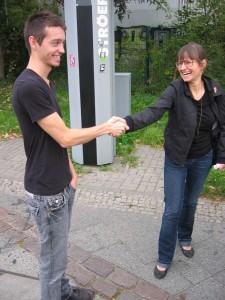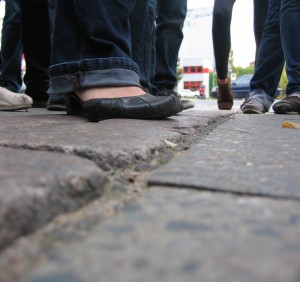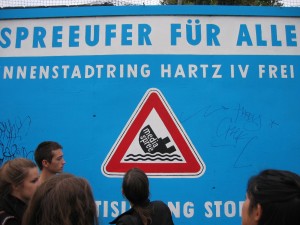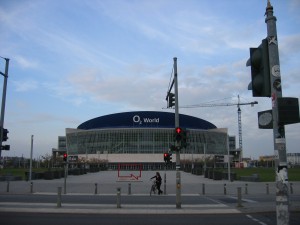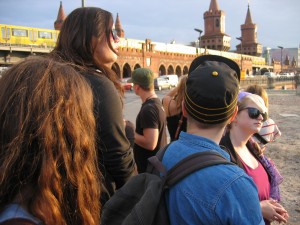A walk through Schinkel’s Berlin with John Toews
On Wednesday John took us on a tour of Berlin’s historical district, known as Mitte. The focus of our walk was the city as it was in the 19th century, when its inhabitants included some of the leading intellectuals of the time, and the city styled itself as “Athens on the Spree.” We began at the Brandenburg Gate, designed by Carl Gotthard Langhans in the late 18th century as a kind of propylaea leading into Berlin. Karl Friedrich Schinkel had a hand in redesigning the staff held by the goddess of peace who crowns the monument.
We continued on to Schinkel’s Schauspielhaus (now called the Konzerthaus) on the Gendarmenmarkt, a somewhat early commission and an example of the architect’s turn toward neoclassicism.
On the Forum Fridericianum, a square built under Frederick the Great (whose monument you see on the right), there is now a memorial to the book burnings that took place there in the 1930s. The square is home to the former Royal Library, now housing Humboldt University’s law school. Interestingly, we learned that the book burnings were not carried out by Nazi officials, but rather by zealous student party members.
Next stop: the Neue Wache, a guardhouse designed by Schinkel along Unter den Linden. The building has been the site of numerous memorials over the course of the 20th century, including both East German and reunified German commemorations of World War II.
One of Schinkel’s masterpieces, not only of architecture but of urban planning, is the Altes Museum. Sitting across from the site of the royal Prussian palace (not currently extant), the building housed the first true modern museum in Europe. Schinkel designed it to integrate the viewer’s experience of art with that of the urban environment: he provided a viewing platform on the interior of the building, from which visitors could contemplate the royal gardens, palace, and the cityscape beyond.
The tour wrapped up near the site of Schinkel’s Bauakademie – his architectural and design academy. The building is also considered one of his masterworks, and was unfortunately torn down in the post-WWII period. This nylon-covered scaffolding has been here for years, but there’s no money to rebuild it. Its ghostly presence reminds us of the many memories and layers that reside amongst one another in Berlin’s cityscape.
A walk through our Kiez with Manuela Mangold
Manuela Mangold, a long-time Kreuzberger, gave us a fantastic tour of the students’ “Kiez” in Berlin on Tuesday afternoon. Kiez is a local word meaning “neighborhood,” but it denotes not just a district of the city (in this case, Kreuzberg), but one’s immediate, local surroundings — the place where everyday life is lived.
We started our tour at the Heinrich-Heine-Strasse U-Bahn station, the stop where the students regularly get onto the subway. During the time when Berlin was divided, it was a border crossing used mainly for commercial traffic. Below, the subway station was a “ghost station” — because the wall ran in a zig-zag manner from roughly the southeast to the northwest, trains going from this part of West Berlin would pass under East Berlin on their way to other parts of West Berlin would pass through a completely darkened (and sometimes guarded) station.
Next on our tour was an example of Stolpersteine (“Stumble Stones”), an art project begun in Cologne, but which has left its mark all over Berlin. A form of Holocaust memorial, it marks where victims of the tragedy once lived. People are meant to “stumble” over these on their daily walks, a constant reminder of the importance of remembering the Holocaust, and its impact on life here.
We continued with a look at the path of the Berlin Wall and death strip. Manuela is sitting right between former East and West in the picture! As in most of Berlin, it’s been restored so nicely now that barely a trace of the division remains.
Oppositional culture has been a huge part of Kreuzberg’s identity since the 1970s. Here are two examples of “squatter” culture — both built right up against the Wall. One is a famous house squat, and the other a garden built right in the shadow of the wall, in what was technically East German territory!
We continued along the path of the wall, which is (in some places) marked by a strip of brick set into the ground. (Dominic represented East Germany, shaking hands with a West Berliner!)
Leaving our Kiez and crossing the Spree River, we continued on to talk about the politics of development along the river banks, another area where squatters and other oppositional movements have traditionally made their homes. Now big developers are buying up large swaths of property, driving up rents and bringing a whole new feel to the neighborhood, garnering vehement protest from locals. One glaring example of this is O2 World, a large concert venue whose undeniably corporate aura conflicts tangibly with its surroundings. Its VIP entrance along the river was heavily protested, but got built anyway.
We ended our tour at the Oberbaumbrücke, which was also divided by the Wall. Now, as you can see in the background, the U1 train line can run all the way across it again!
Our Kiez is in some ways the perfect spot for the students, sitting uncomfortably amidst the former East and West, scarred with layers of memory and history – and still transforming before our eyes.
tags
the author
I'm a doctoral student at CUNY Graduate Center. I'm thrilled to be teaching the CHID Berlin program with Prof. John Toews! You can contact me at naraelle [at] gmail.com, or find out more about me at www.naraelle.net.
Blogroll
- Annie Holden's blog
- Cassie Hoeprich's blog
- Dominic Barrera's blog
- Janet Williams's blog
- Mariah Alderete's blog
- Melissa Au's blog
- Robert Hampton's blog
- UW Students Study Abroad Our students Natalie and Cassie are contributing to the official IPE student blog this fall!



